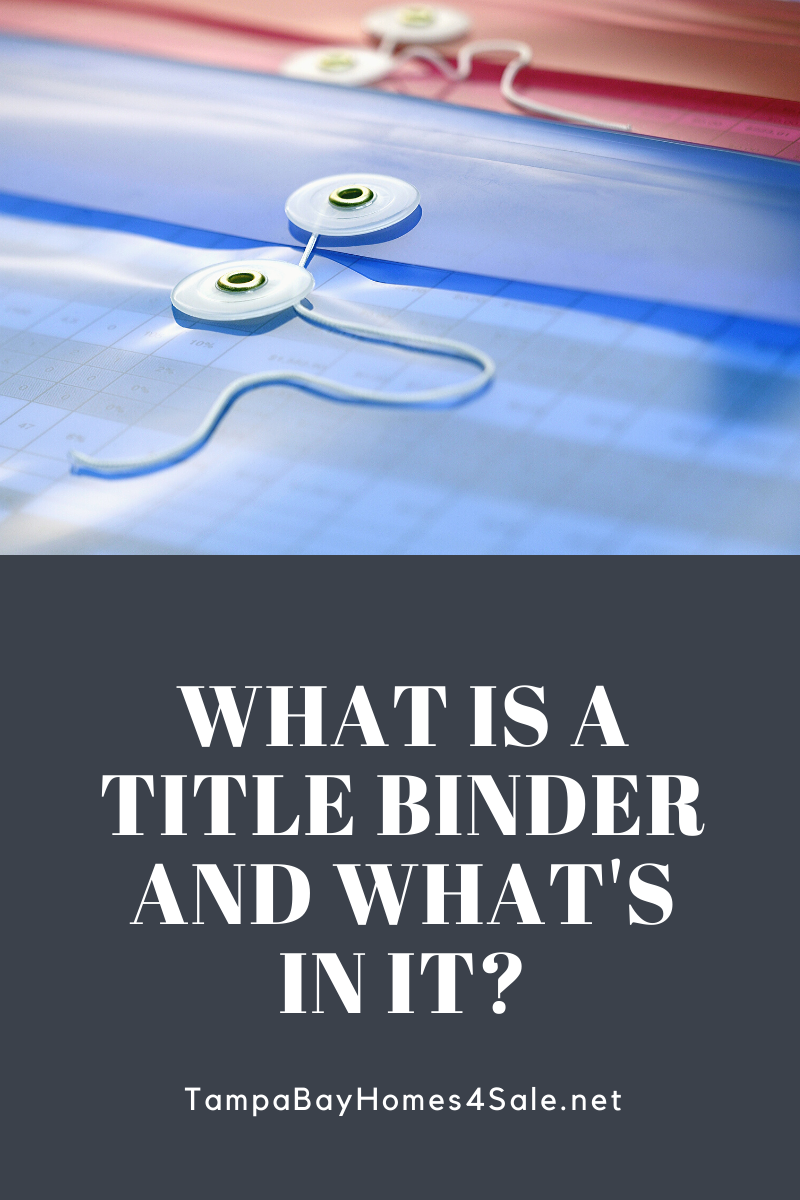What is a Title Binder and What’s In It?
 A title binder, or title insurance binder, is also called a title commitment. It is a document created by a title insurer that binds the insurer to issue a title insurance policy if certain conditions are met. It is a commitment to issue the policy. A title insurance policy protects the owner of real estate from certain threats to their legal ownership.
A title binder, or title insurance binder, is also called a title commitment. It is a document created by a title insurer that binds the insurer to issue a title insurance policy if certain conditions are met. It is a commitment to issue the policy. A title insurance policy protects the owner of real estate from certain threats to their legal ownership.
Before a title binder is issued, the title insurance company does a thorough title search of documents recorded at the courthouse and referencing the legal address of the property. The goal is to locate any liens, encumbrances, encroachments, and other claims to the ownership or use of the property. These will all be outlined in the title binder as attachments or exhibits. The purpose is to find everything already affecting the property so that most new or previously undiscovered claims can be insured. In other words, if it’s already recorded, it can’t be insured so that it will be excepted from coverage.
Exceptions: This is one part of the title binder. All known risks or recorded items will be excepted from coverage, as they already exist and can rarely be deleted or changed. The buyer must understand what they are so that they can object to going forward with the transaction if there is a problem they can’t resolve that warrants backing out of the deal.
That is rare, but things like subdivision covenants and restrictions are “of record,” and they can’t be covered. So, if the homeowners’ association says that you can’t put any permanent fixtures within ## feet of the property line, then you can’t. Or, if you can’t have a boat in the yard, you may have a problem with your beloved 20-foot fishing trawler on the trailer. You can’t make a claim against your title insurance for items excepted from coverage.
Another item that may pop up in exceptions is something turned up in the survey. This happens more often in rural home or land deals. An example would be an old falling down fence on the back side of the acreage that is on the land, inside the boundary of the survey. Even though it is old and on the ground, if the surveyor notes it on the survey, it will be excepted, as sometime in the past there may have been a neighbor who thought they had a claim to part of the property.
Requirements: This section of the title insurance binder specifies things required to be done for the policy to be issued. Things like paying off the current owner’s mortgage or other liens would be in this section. The title company wants things that can be corrected or satisfied to be handled before closing, so they aren’t a claim later. Another example would be a quitclaim deed from a former spouse when there was a divorce in the past when both were on a deed to the property or otherwise could make a claim.
Property Information: Going backward, as this is the first item on the binder, the legal description and other information about the current owners and location of the property will be in this area. Careful checking of the legal description is important to assure it’s describing the property properly.
The most important takeaway from this article for a buyer is that the title binder has very important information about the property. The buyer(s) should read it carefully, making sure that there isn’t something there that changes their minds about buying the property or their offer price.
Are You thinking of buying a Home in Tampa Bay?
Use our site to search homes for sale in Tampa Bay and all of our surrounding areas. Unlike the “big name” sites out there, our site is directly connected to our local MLS and is updated EVERY HOUR. By creating a Property Manager account you can stay on top of the newest homes for sale and get Price Change alerts so you can stay ahead of other buyers and beat them to the BEST deals!
In the meantime, check out these 1 click searches:
- Tampa Bay Homes for Sale
- Tampa Bay Condos for Sale
- Tampa Real Estate Waterfront
- Houses for sale in Tampa Florida with Pool
- Luxury Homes in Tampa Bay
 $519,500
Active
$519,500
Active
615 Tropical Breeze Way 615 Tampa, Florida
1 Beds 1 Baths 1,084 SqFt
 $399,000
Active
$399,000
Active
7344 Monterey Boulevard Tampa, Florida
4 Beds 2 Baths 1,316 SqFt 0.120 Acres
 $739,000
Active
$739,000
Active
16159 Colchester Palms Drive Tampa, Florida
4 Beds 4 Baths 3,126 SqFt 0.140 Acres
 $765,000
Active
$765,000
Active
8723 Sorano Villa Drive Tampa, Florida
3 Beds 3 Baths 2,925 SqFt 0.200 Acres













